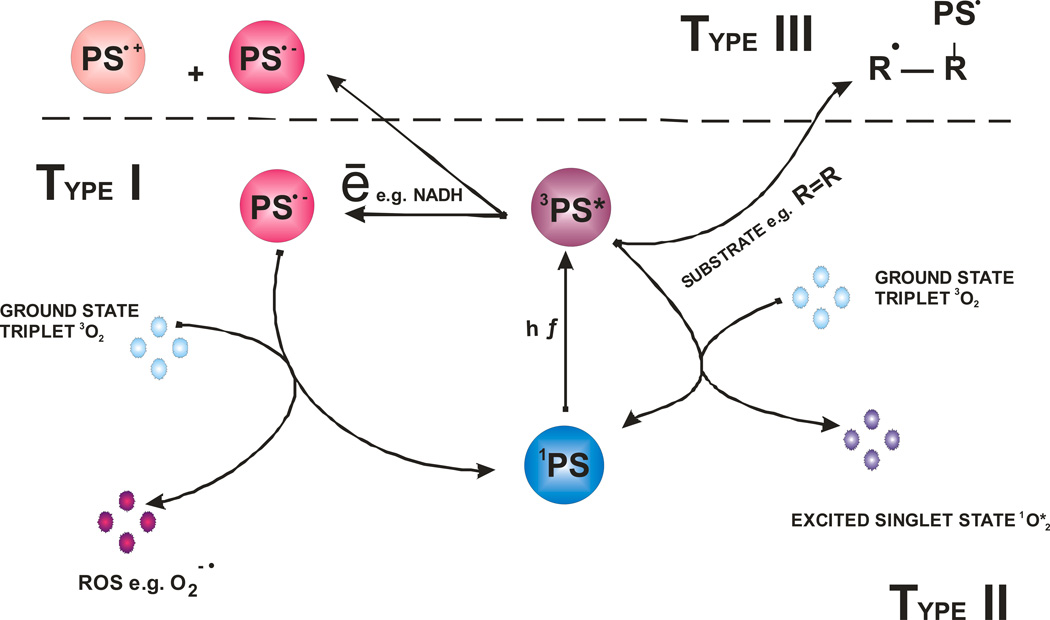Figure 1.
Schematic illustration of photodynamic acion. The PS initially absorbs a photon that excites it to the first excited singlet state and this can relax to the more long lived triplet state. This triplet PS can interact with molecular oxygen in two pathways, type I and type II, leading to the formation of reactive oxygen species (ROS) and singlet oxygen respectively. In the absence of oxygen the PS may interact with a substrate (R) in a pathway known as Type III.

